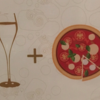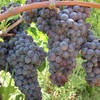La Scuola Presenta Pio Cesare's Piemonte with Pio Boffa
On my first visit to Piemonte in 1982, I stayed at Il Giardino di Felicin in Monforte d’Alba. The owner, Giorgio Rocca, a very charming host and great chef, offered to help us make arrangements to visit some of the local producers. I mentioned Pio Cesare and he quickly made an appointment for the next morning. At the winery in Alba, we were met by Pio Boffa, the owner of Pio Cesare. His English is excellent, and we had a wonderful visit and tasting. Ever since then, whenever I am in that area, I try to visit the winery and always receive a warm welcome.
Recently Pio was in New York to teach a class at Eataly and I went to see him.
During the class Pio talked about the history of his winery and how he was the only one in the family who followed his father into the wine business which he joined in 1973. Tradition is very important to Pio and he said that he tries to make wine in the same way as they did in the past. The winery is in the same location as it has always been, right in the center of Alba. Pio said that he was very proud of the fact that his father, Giuseppe Boffa, told Pio his wine was the same as he himself had made 50 years ago. Pio hopes that in the next few years his daughter will follow in his footsteps. Ten years ago, Pio’s nephew joined the winery.
The Pio Cesare winery produces 40,000 cases of wine a year, which according to Pio makes them a middle size producer. In the 1960’s and 1970’s there were only a few producers in the area but now there are many more. Since then, the more traditional and conservative producers have had to fight to keep their share of the market. The “new” producers used different wine making techniques and started to make single vineyard (cru) wines. Concessions have to be made but not at the cost of tradition. That is why Pio Cesare maintains the same bottle, same label, and same style of wine as in the past.
The Wines
Cortese di Gavi 2009 100% Cortese- the vines are on hillside vineyards in very select locations in the Gavi area. Theses vineyards belong to growers that have been producing grapes for Pio Cesare for generations and who have worked their vineyards according to Pio’s strict quality controls. Slow fermentation takes place at low temperatures in stainless steel tanks on the lees for four months. The wine is kept in stainless steel tanks until March after the harvest when it is bottled. Pio Boffa said that malolatic fermentation depended on the vintage and for this wine 1/3 underwent malolatic. He went on to say that 2/3 of all Gavi were produced in the flat valley area. His grapes are grown on the hillside where the soil is drier and there is a southern exposure. Here the yields are lower and the grapes ripen later. Because of this the wine is more complex, will age better, have more fruit and a mineral character with good acidity. He added as an aside that the Cortese grape was difficult to grow because it is very acidic. However by growing the grapes on the hillside and leaving it on the lees one can produce a very good wine. This is a fresh, fruity, aromatic white wine with some complexity. $27
Chardonnay “Piodilei” 2008 100% Chardonnay. This is a single vineyard, barrel fermented Chardonnay, from the very first Chardonnay vineyard they planted in 1980, at the “Il Bricco Estate” in Treiso, in the Barbera area. Pio pointed out that this is not a “traditional” wine. The yields are kept low and the grapes are picked when they are fully ripened, late harvest. Fermentation occurs on the lees in new French oak barrels. The wine in aged on the lees in French oak barrels for 10 months, and for six months in the bottle before release. 1/3 of the wine underwent malolatic. The wine has ripe fruit flavors a touch of spice, and a long finish. $32
Pio said that white grapes grown in the right terroir and that are allowed to remain on the less produce a wine that is more like a red wine.
Barbera D’Alba “Fides” 2007 100% Barbera. Pio has a strong feeling for Barbera and called it the wine of the people of Piemonte The grapes for this wine come from a single vineyard in their “Colombaro” vineyard in Serralunga d’Alba. This is a prime area for growing Nebbiolo. The wine is called Fides, Latin for trust and faith. Pio said that this was a true act of trust and faith on the part of him and his father. In fact they both came up with the idea at the same time. He pointed out that if it was planted with Nebbiolo the land would be worth four times as much. Other producers give Nebbiolo the highest position and the most southern exposure while leaving Barbera at a less elevated position. Pio said the all his Barbera grapes have the same position as his Nebbiolo. They used a very old clone of Barbera that is not used any more.
Fermentation occurs in stainless steel tanks and skin contact lasts for ten days. Right after being drawn off, the wine rests for 20 months in medium toasted French oak casks: 80% in barriques and 20% in 20hl casks. This is a wine with fresh ripe fruit aromas and flavors, with a hint of spice and good acidity. The wine can age and it was a great combination with the agnolotti del plin, “pinched” ravioli that are typical of Piemonte, that we tasted. $44
It was unfortunate that one important producer, that Pio would not name, decided not to produce any Barolo or Barbaresco in 2006. This led many to assume that it was not a very good vintage. Pio said that in his opinion the 2006 vintage was very good for both Barolo and Barbaresco and it was a very traditional vintage for Nebbiolo. Now that the wines have been released it is evident that it was a very good traditional vintage.
Pio said that he has tasted Nebbiolo grown in other parts of the world and it did not taste like Nebbiolo. In other parts of Italy they make wine from Nebbiolo but the style is different. None of these can compare with Nebbiolo when it is made into Barbaresco and Barolo- -there is just something about the terroir. Pio added that for him Barolo was the King of wine and Barbaresco was the Queen.
Barbaresco 2006 The grapes come from Pio’s family owned vineyards, Il Bricco Estate, and the great hill of San Stefanetto, both located in the village of Treiso. Vinification takes place in stainless steel tanks and skin contact lasts for about 20 days. 35% of the wine is aged in French oak barrels,1/3 new, for 30 months and the remaining 65% spends three years in French oak casks, 20 to 50 hl each. This is a traditional classic Barbaresco and has long aging potential. $62
Barolo 2006 100% Nebbiolo The grapes for this wine come from his family owned vineyards in Serralunga d’Alba (Ornato), Grinzane Cavour (Gustava), La Mora (Roncaglie) and Barolo-Novello (Ravara). The balance of the grapes comes from other exclusive vineyards owned by growers who have provided grapes to his family for generations. This he said was his traditional Barolo-his “regular old classic style.” Blending grapes from different vineyards was the traditional way to make Barolo. Grapes from different locations give different characteristics to the wine -- color from one, complexity from another, concentration and longevity from other sites, but all are the essence of the terroir. This is a traditional classic Barolo and will age very well for a number of years $67
Barolo 2006 “Oronato” 100%. Nebbiolo this is a single vineyard Barolo from very ripe grapes of three different plots of the family owned Ornato Estate in Serralunga d’Alba.
Fermentation takes place in stainless steel tanks with skin contact for 15 days. The wine is aged in medium toasted French oak barrels, for 36 months, 70% in new barriques and 30% in 25 hectoliter casks. This is a big, concentrated Barolo that is produced in small quantities (7,000 bottles) and only in the best vintages. Pio said that this was a wine that was meant to age and only after a number of years will it show its true characteristics. $110







































i-Italy
Facebook
Google+
This work may not be reproduced, in whole or in part, without prior written permission.
Questo lavoro non può essere riprodotto, in tutto o in parte, senza permesso scritto.